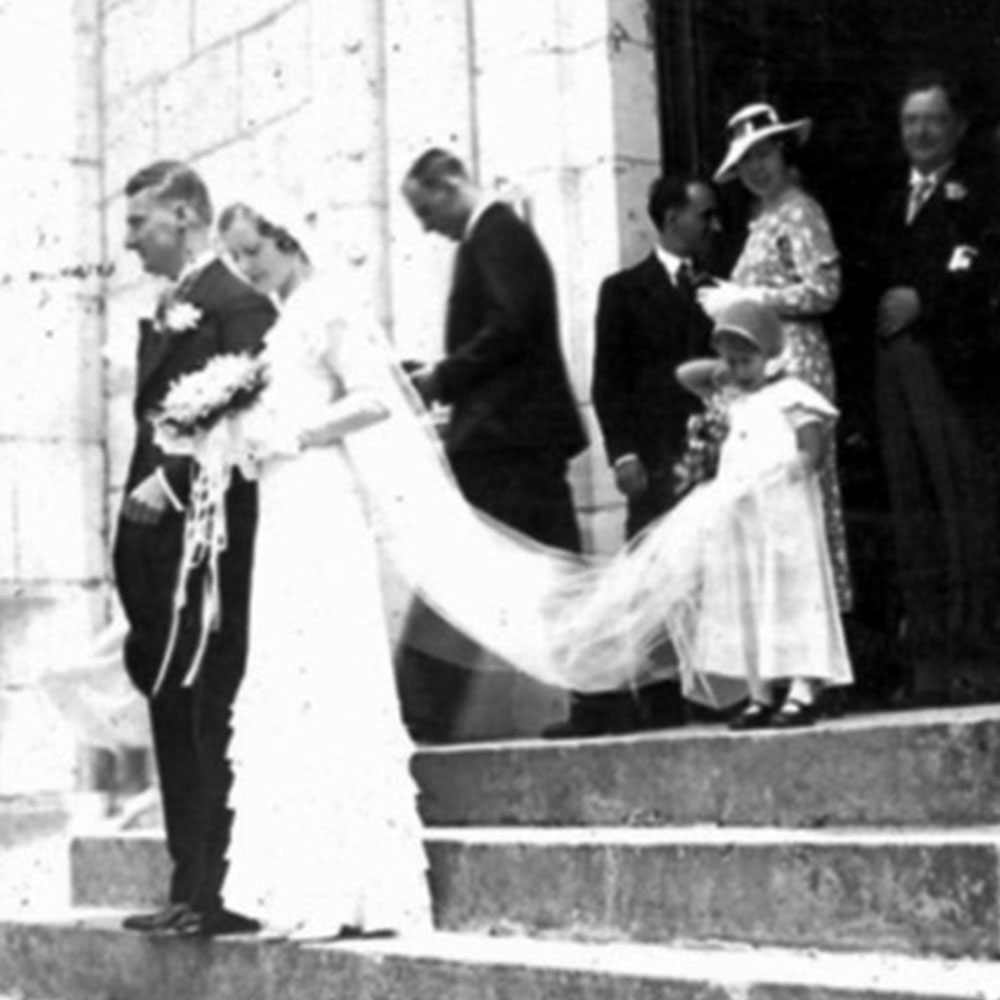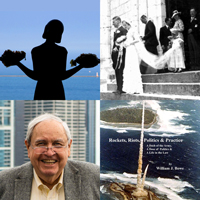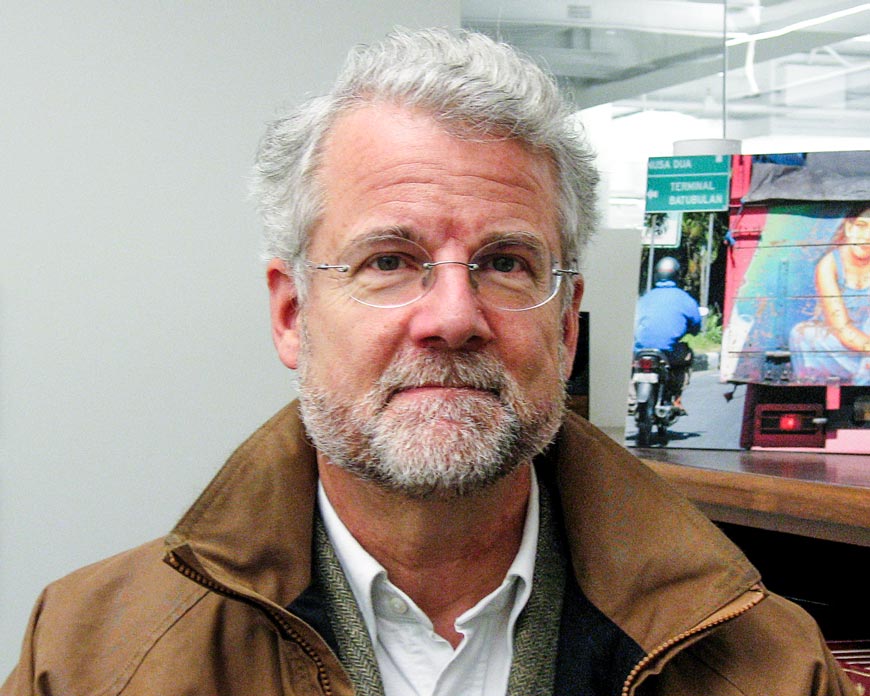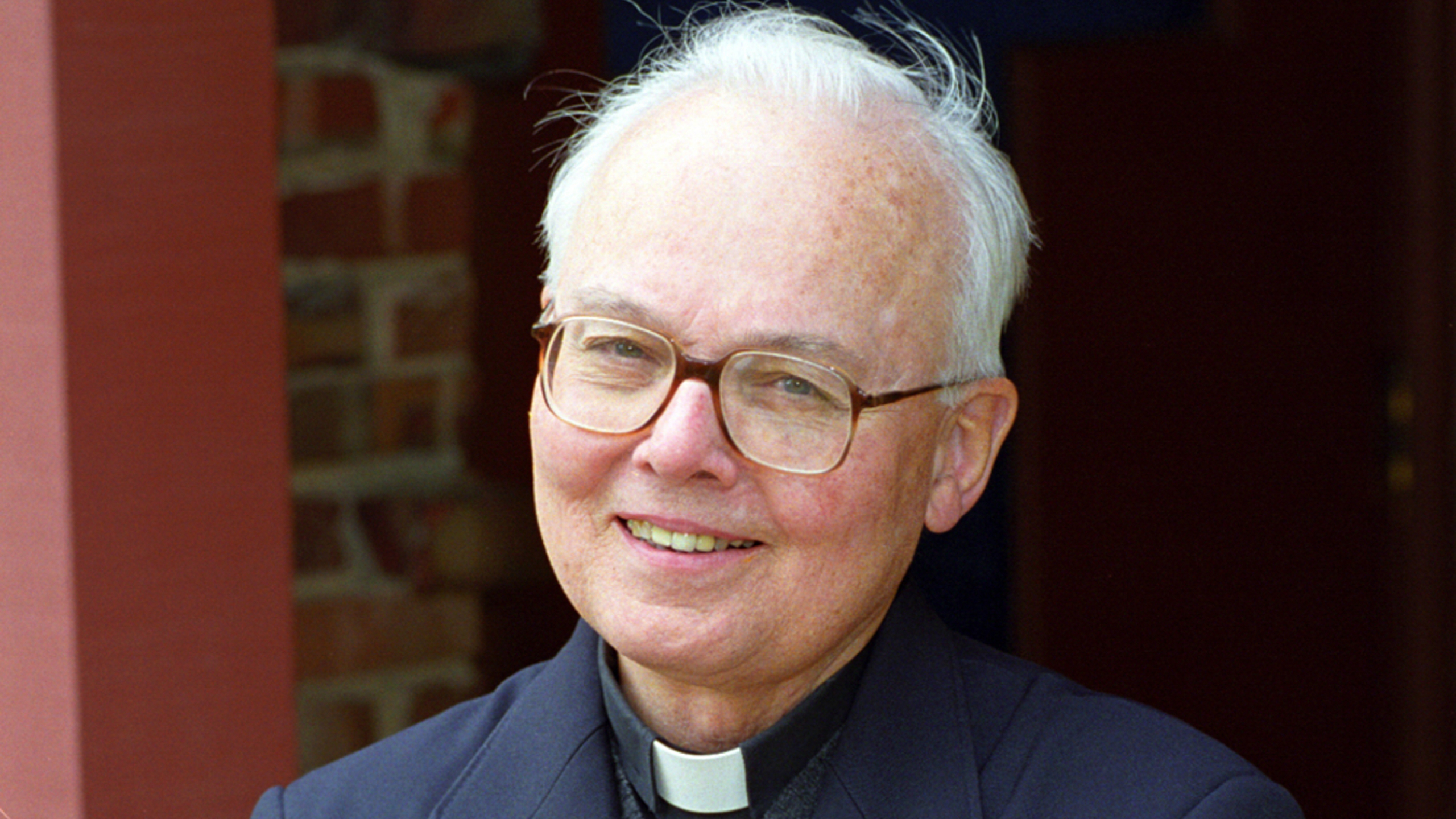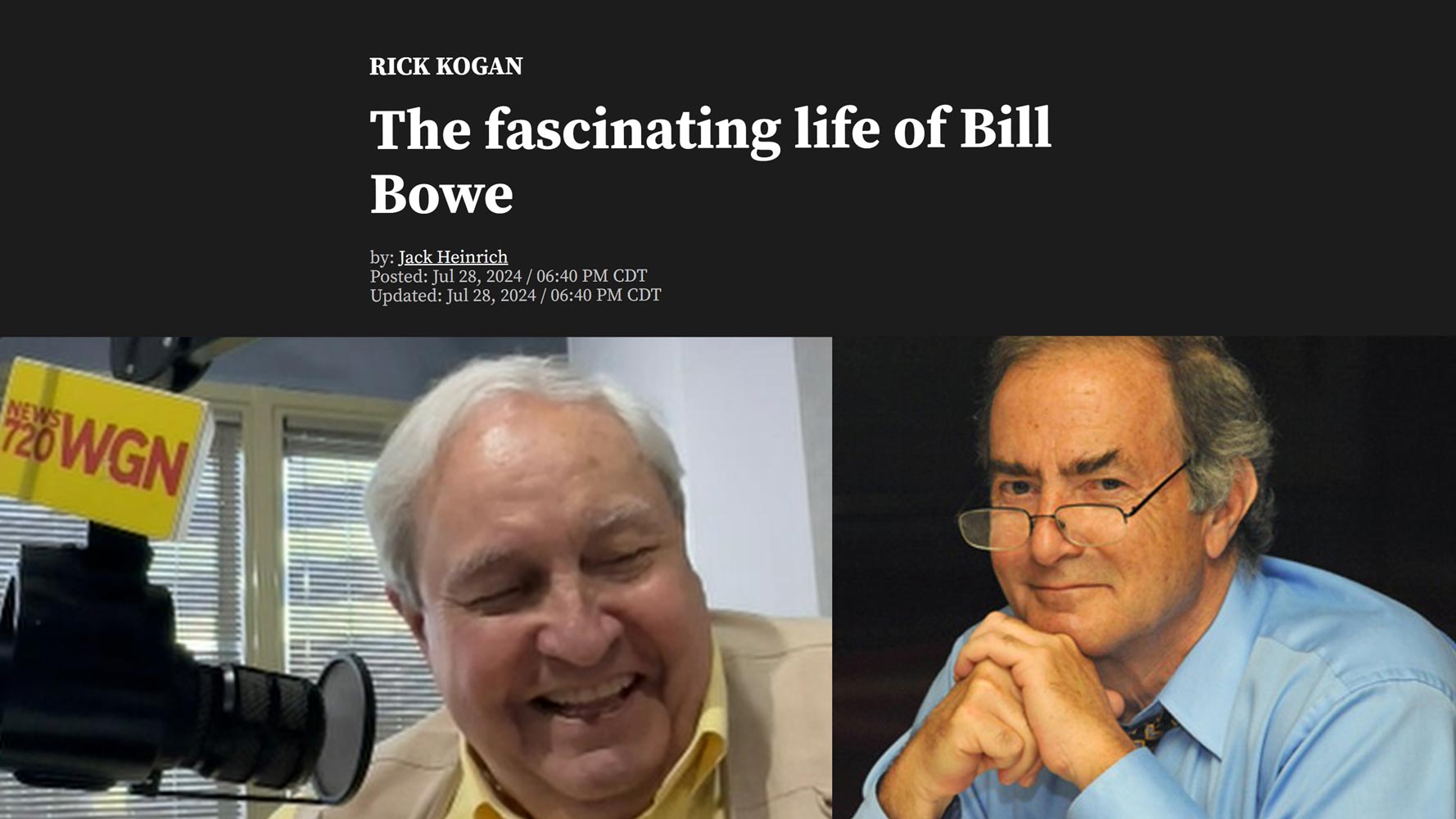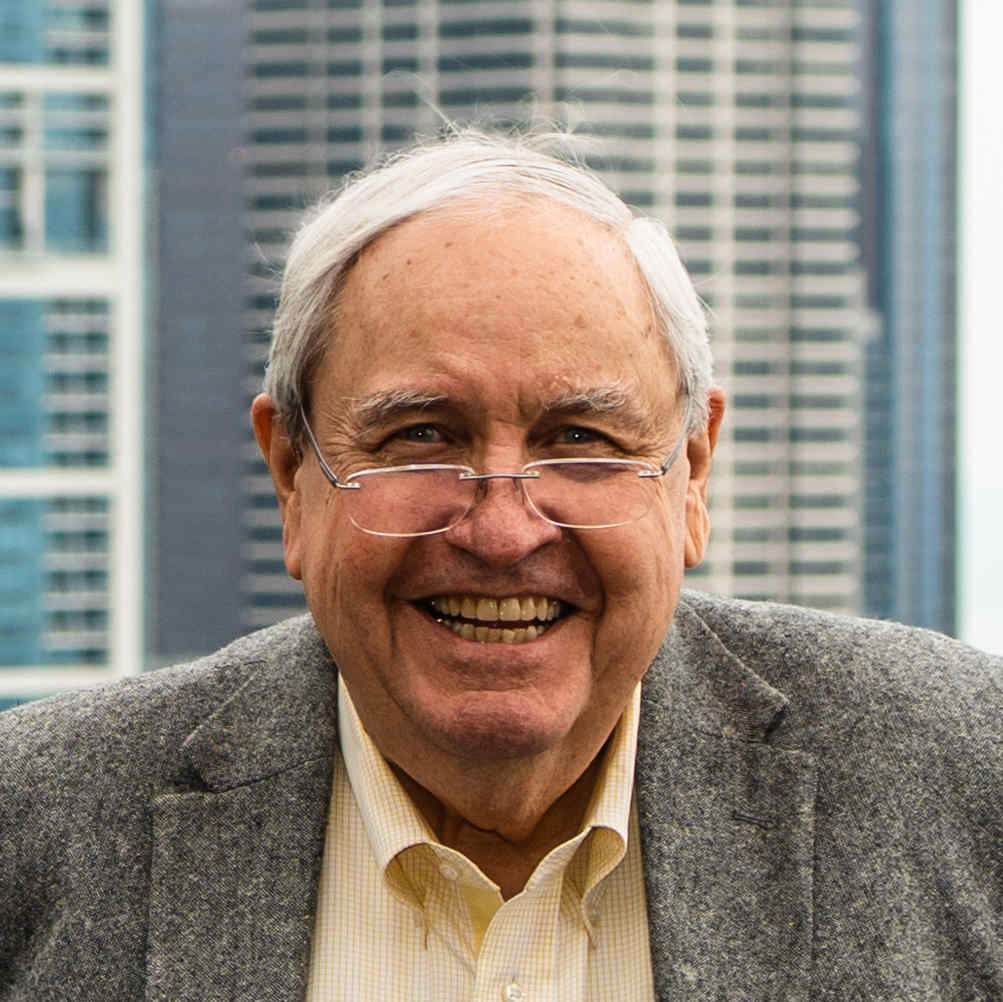Richard Gwinn, Jr. (1867-1932) is featured in this slide show. After his first wife, Mary Roche, died giving birth to Mary Gwinn (Bowe) in 1901, he was remarried in 1907 to Elizabeth Tack. Soon Mary was joined by three new sisters, Elizabeth (Betty) Gwinn, Martha Gwinn (Casey) and Nancy Gwinn (Riboud). After Richard Gwinn’s death in 1932 Mary Bowe and her husband Bill Bowe, Sr. sailed to France with Betty, Martha and Nancy and his widow, Elizabeth Tack Gwinn, for a getaway respite from the family’s care for him following his 1929 stroke. The trip was unexpectedly fateful, as Nancy Gwinn met and married Jacques Riboud and was married to him the next year in 1933 in Chindrieux, France .
Editor’s Note: This is how Mary Gwinn Bowe remembered her father in her 1970 book, The Families. She notes important moments in his personal and public life as the City of Baltimore’s Treasurer (“Register” as the office was known then). And, in an odd reflection of today’s Time of the Corona, she recalls when the “Spanish Flu” pandemic struck her and members of her family in 1918.
Richard Gwinn, Jr. as Richard Gwinn was born in Baltimore, May 30, 1867, and died in Mt. Washington on June 30, 1932, He never used Lawrence, his middle name. He first married Mary Agnes Roche June 2, 1900. She died March 13, 1901, with the birth of their only child, Mary Agnes Gwinn. Their marriage was celebrated in St. Paul’s Church, Washington, D.C., the Reverend William Temple of Easton, Maryland officiating. The wedding reception was held at “Oakrest” in Georgetown, the home of the George Washington Sissells, cousins of the bride.
His second marriage was to Elizabeth Cosgrave Tack in October, 1907, in New York City. She was born April 7, 1872, and died November 7, 1946, in Mt. Washington, Baltimore. There were three daughters born: Elizabeth Cosgrave, Martha Burns and Anne Chesley, who was called Nancy. Richard, both wives and Elizabeth, who was called Betty, are all buried in Bonnie Brae.
He was graduated from Calvert College and lived in Baltimore all his life. One of his first business connections was with the Colonial Sayings and Investment Association with William C. Page, Dr. Thomas Ashby, James Preston and Howard Williams; he was Secretary and the names of the officers were listed on fine engraved Association stationery, with a huge picture of Mount Vernon The office was in the Calvert Bank Building. In 1906 he was associated with Lewis Hopkins and George Kimberly as managers for the Phoenix Mutual Life Insurance Company of Hartford, Connecticut. Their offices were also in the Calvert Bank Building.
The Calvert Bank and I both started out in 1901. It then had its own building at Howard and Saratoga Streets. It is now simply a branch office of the Maryland Corporation. Richard Gwinn was Second Vice President, with Page, President, and Preston, Vice President and Counsel. Preston later served three terms as Mayor of Baltimore. In 1906 Richard Gwinn served on the Grand Jury.
By 1911 he was City Register of Baltimore, a post he held for twelve years (i.e. city “Treasurer”). In 1914 the “Sun” said, ”City Finances Improvell, and quoted him: “We are now paying ‘debts that should have been paid before, and we are
making new improvements that should have been made long ago.” Baltimore then was still suffering from the financial effects of t e old-fashioned machine administrations of the eighties and early nineties. At this time McKinley was Preident and visted the city.
Grafflin Cook was one of my father’s close friends. When he was left a widower, he and Mr. Cook shared bachelor quarters in the Stafford Hotel. (Years later in the early 4O’s when we spent our last Christmas in Mount Washington, Bill, Dick, Willie and I stayed at the Stafford going out to 1809 each day. Lillian Atwater, our old friend and cook came and “sat” with the boys when we were late.) When Samuel Cook, the founder, father and maker of all the bottle caps for everything, died (leaving over a million mostly in Crown, Cork and Seal stock) my father and George Weems Williams were the administrators.
On March 26, 1914, the “Sun” reported, “How Money Makes Money. Baltimore will be placed on the world’s financial map if the recommendations of City Register Richard Gwinn are adopted, as they should be. These are: (1) ‘serial-annuity’ plan of payment; (2) coupon, registerable as to principal, or fully registered, and (3) principal and interest payable in foreign currencies as well as United States money … This gives the ideal type of security and… opens a world-wide market”.
And at the same time, “To Sell Bonds Abroad–City Register Suggests Wide Market for City Securities.” Mr. Gwinn recommends that ‘in the future city stock be issued in the form of serial bonds, with coupons attached for interest, registerable as to principal only and registered only upon request. That a European market be created for city stock by making bonds and coupons payable in English money, as well as American money, all payments to be made in gold, etc.’ “Register Gwinn In Report Discusses Interchangeable Bonds. Plan Adopted by New York.”
In May 1914 “Gwinn Re-Named City Register;” “Million Ready For City Loan” went the headlines and “City Register Completes Accumulation to Meet Water Obligation;” “Tale is Like a Drama…A story of interest on the money paid the city last Friday for the $7,000,000 worth of stock bought May 4 last by a group of local and New York financiers was told yesterday”. There were other items: “Tax Assessment Wise and Proper,” “Reply to Mr. Gwinn–Bankers Insist That Property Owners Pay For Improvements,” “Mr. Gwinn insists,” “City Register Replies to Bankers’ Letter on Public Improvements. He Points Out the Benefits. Declares That Owner Whose Property Has Been Enhanced In Value Has Received A Gratuity.”
On May 24, 1915: “Re-elect Gwinn as Register Tomorrow,” “Unanimous Action by Council Expected. One Day Rest in Four Years.” During the four years he had been absent only one day and had worked ten Sundays–a “record without parallel.” Mr. Gwinn does not look upon this performance is worthy of special mention. If it is a record, he says it was merely an accident. The only reason he ascribed for his continuous presence is that he simply had to be there.
On May 26, 1915, the “Sun” says, “Gwinn Again Register. Receives Unanimous Vote”.
A favorite exhortation in the family was “not to take leave of your senses.” His sister, Bessie, wrote him for advice about investing a little of her hard-earned money. He recommended Baltimore City Stock as being perfectly safe and urged her “not to take leave”.. and “all the money that was ever lost was invested in the safest, most promising and most remunerative schemes that you ever heard of and the investor is usually induced to part with his money, not by a stranger, but by a solicitous and interested friend.”
From the Municipal Journal of August 25, 1916, comes an account of “How the City Successfully Financed the Maturing 1916 Water Loan” …..”During the past year the city’s fiscal officers have had a financial nut to crack which required skill and ingenuity to accomplish the result and at the same time guarantee the fullest measure of popular satisfaction. The matter in question was the Water Loan which was due and payable on July 1, 1916. Ordinarily the payment of such a loan would have been a very simple matter if the sinking fund provisions had been properly conserved. But the prospect of easy redemption was spoiled by reason of the certain deficit which past mistaken financial policies had made inevitable.
The first of July, 1916 approached with the certainty that the funds in hand would be $1,336,000 short. This deficit was due to the financial operations of many years ago. It was not due to anything recent. The deficit was caused by the failure during certain years way back in the past to appropriate the proper sinking fund amount which ought to have been set aside to meet the maturity of the loan.”
“The solution of the problem fell very largely upon the shoulders of Mr. Richard Gwinn, the City Register. He saw what was coming and he began laying his plans as far back as 1913. As a skilled and experienced financial officer, he worked out a plan and then conducted that plan with such ease and success that the public was hardly aware of the fact. . . . The contributions to the sinking fund had been discontinued in an early period. In any case it was neglected. The object was to avoid having to refund the debt….A successful arrangement of sinking funds was worked out by Mr. Gwinn.”
At this time James H. Preston was mayor and was elected President of the Industrial Bank of Baltimore. Richard Gwinn, the City Register, was elected Vice President.
Mr. Gwinn was also a Vice President of the Calvert Bank. The majority of the men on the board were identified with the large enterprises located at Curtis Bay.
Now my father concerned himself with getting Charles Schwab to come to the city. He went to New York to visit him informally at home in his Riverside Drive house. He enjoyed playing the magnificent built-in organ apparently as much as he did pursuing the financial aims of the trip. In any case Schwab came to Baltimore and the Mayor and seven other gentlemen welcomed him. There was a dinner November 21, 1916, at the Belvedere at which Dr. William Welch of Johns Hopkins presided, Mabel Garrison sang and the leaders of finance were all there. This was the opening up of the Bethlehem Steel Enterprises at Sparrow’s Point. It was the beginning of a boom, not only for that heavy industry, but it laid the foundations for the later airplane industry, Glen Martin and the other developers and manufacturers.
In October, 1917, the sale of Liberty Loans was well under way and my father presided over these meetings frequently and spoke for the bonds along with Mayor Preston and members of the City Council.
On May 26, 1919, the “Sun” carried a letter to the public from forty-five banks and investment companies to the effect that: “Under the terms of the City Charter you will be required on the 27th of May to elect a City Register to serve four years. The importance of this position to the banking and business community prompts us to call your attention to the efficient and business-like conduct of this department under the administration of Mr. Richard Gwinn, the present incumbent. The City Register is the custodian and transfer agent of all City Stock. He has primary charge of all City loans. He is the custodian of all City money and, with the Comptroller, is the paymaster, auditor and bookkeeper for the City. Mr. Gwinn has administered this office for eight years with singular ability, and we respectfully suggest that there is no good business reason for a change at this time. We, therefore, very earnestly petition your honorable bodies, in joint session, to re-elect Mr. Richard Gwinn City Register.
Respectfully,
Signed by forty-five banks and financial houses.”
The only direct reference to the family in the South comes in a letter to his mother on April 22, 1918, “I have just returned from a trip to Birmingham where I represented Baltimore City at a convention of the Southern Sociological Congress. On my return I stopped in Atlanta and spent a day with Bob; the next day I went down to Conyers and Covington, and as it was the first time I had been there in thirty years, I made it a point to see them all and had a very delightful visit and a very warm welcome. I found them all well and, with the exception of natural changes, very much as I left them. They sent you all good wishes.”
By December everyone had “flu”, this was the great epidemic.
At Deal I nursed both my grandmother and then Bessie and my father worried very much about our being there in the house alone with fires to tend and my being in school from 8-1. We closed up as soon as they were able to move and went over to Asbury where I immediately came down with it.
Mayor Preston did not run again in 1919 and my father was surprised to be reappointed by a Republican mayor. The Bankers met in Mexico City in 1920; a card from my father indicates that he returned home by way of California, Oregon, Washington and the Canadian Pacific. Together with his one trip to Europe with Mary [probably Mary Cornelia Gwinn (West), his sister], he did manage a reasonable amount of travelling. However, he was never a restless person and I never knew a man more quiet and methodical, more free from fads and notions or more happy to just be well and enjoy his family and his home.
After my marriage to William Bowe June 14, 1928, we returned to occupy 9A, our new apartment at 1120 Lake Shore Drive.
At Thanksgiving my parents came West and paid us a visit, his only trip to the city. It was excessively cold, but they met the rest of the Bowe family and friends, attended concerts and an opera at the old Auditorium. They found me happy, comfortable and safe among the devoted members of the Chicago family.
The following summer my father suffered a stroke from which he never completely recovered. He died June 30, 1932. The three years were hard indeed on mother and the girls. Nancy was pretty young and it did not change her manner of living very much. But it affected more Betty who was very distressed and Martha whose attention and patience and enormous devotion were a great solace to both parents. During this time his speech was affected and his desk at the bank remained vacant. Specialists from Johns Hopkins were not optimistic and we felt indignant about that because we really could see gradual improvement. However, they were right as the level of ability never again rose very high. He died at sixty-five and is buried in Bonnie Brae.

